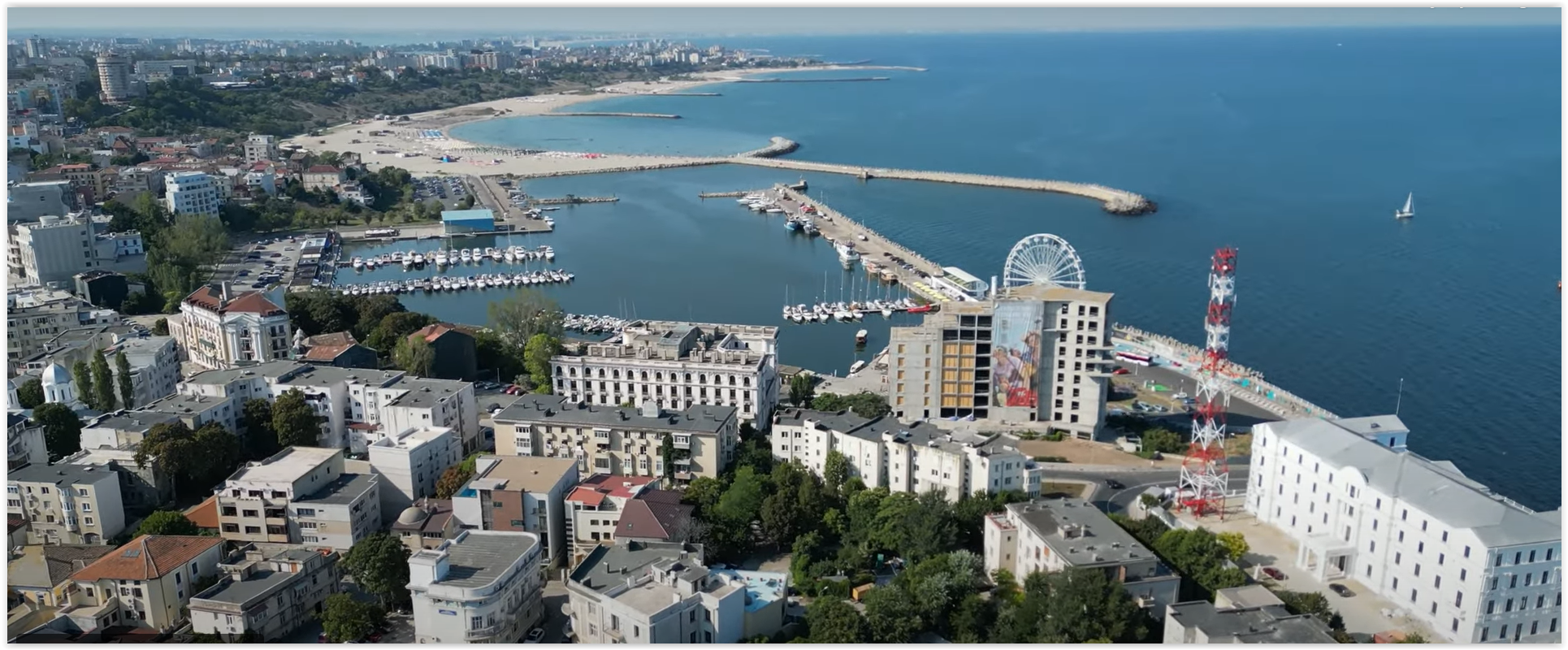Constanta (Constanța) is an important port city and resort located on the Black Sea coast in southeastern Romania. This city, which combines both historical and modern features, is one of the largest seaside cities in Romania and has the largest port in the region. Here are some of the main features that introduce Constanta:
1. Historical and Cultural Richness
- Historical Past: Constanta has been an important settlement since ancient times. The city was founded by the Greeks under the ancient name Tomis. For this reason, there are many ancient ruins and historical structures in the city. Artifacts from the Roman Empire period, traces of the Byzantine Empire and the Ottoman Empire also constitute the cultural heritage of the city.
- Museums and Galleries: There are many museums and galleries in the city. One of the most well-known museums is the Constanța Archaeological Museum, where historical remains of the region are exhibited. In addition, the Maritime Museum is an important place for those interested in maritime history. - Landmarks: Historical structures such as the Constanta Lighthouse, Ovidius Square (where the Roman poet Ovid was exiled) and Cathedral attract attention in Constanta.
2. Geographical Location and Nature
- Black Sea Coast: Constanta is one of the most important port cities of the Black Sea. The city is intertwined with the sea and is famous for its wide beaches and coastline. It attracts the attention of holidaymakers especially in the summer months.
- Beaches and Resorts: The coasts of Constanta are home to many holiday resorts. The Mamaia region in particular is a popular holiday resort in the summer months and there are many entertainment venues such as luxury hotels, restaurants, and nightclubs.
- Natural Beauties: Around Constanta, there are forested areas, parks and nature reserves that meet the sea. Lakes such as Lake Techirghiol are also located near the city.
3. Economy and Trade
- Port City: Constanta has the largest seaport in Romania and is a very important center for trade, export and logistics. It is an important part of the sea route to both Europe and Asia via the Black Sea. This makes the city rich in trade.
- Tourism: Thousands of tourists come to Constanta for vacation every year. This allows the city to base a large part of its economy on tourism. Resorts, beaches and nightlife provide significant income to the city.
4. Modern and Developed Infrastructure
- Transportation: Constanta is located in the southeast of Romania and has good road connections with other major cities in the country. In addition, Constanta Airport is an important airport for national and international flights.
- Shopping and Commerce: The city has large shopping malls, markets and stores. Shopping malls and modern shops are popular places for both locals and tourists. Shopping malls such as City Park Mall and Vivo! Constanța show the modern commercial structure of the city.
5. Social Life and Entertainment
- Nightlife: Constanta's nightlife is very lively. Especially in the summer months, there are countless bars, cafes, restaurants and nightclubs in popular resort areas such as Mamaia. Romania's most famous beach parties are held here.
- Cafes and Restaurants: The city has restaurants and cafes serving Black Sea cuisine as well as a variety of international cuisine. Seafood is very popular and products such as fresh fish and mussels are often consumed.
- Festivals: Various music festivals and cultural events held in the summer months make the city attractive to tourists.
6. Education and Universities
- Constanta is also an important center in terms of education. Ovidius University is one of the largest universities in Romania and increases the young population in the city. The university offers education in various branches of science and can be an attractive place for foreign students.
7. Security and Quality of Life
- Security: Constanta is generally considered a safe city. However, as in big cities, some security measures may need to be taken.
- Quality of Life: Constanta offers a slightly quieter life compared to other big Romanian cities, especially outside the summer season. The infrastructure in the city is well-developed and daily life is easy.
8. Cultural Interaction
- Ethnic and Cultural Diversity: Apart from Romanians, the city is also home to Turks, Tatars, Greeks and other ethnic groups. This increases the cultural diversity of the city and provides interaction between different cultures.
Conclusion
Constanta stands out as a city that draws attention with its historical and modern structures, location to the Black Sea, tourism opportunities and social life. This city, which has both cultural and natural riches, offers a dynamic life that appeals to holidaymakers, business people and students. It is an ideal place for those who want to make a historical discovery and have a holiday.




